What is Om in Sanatan Dharma? Meaning and Spiritual Significance of Om (ॐ)
Sanatan Dharma, commonly known as Hinduism, is one of the world’s oldest living religions. At its spiritual core lies a sacred syllable — ॐ (Om or Aum) — the most fundamental and profound symbol of divine energy, cosmic vibration, and spiritual knowledge. Revered in scriptures, recited in mantras, and practiced in meditation, Om is not merely a sound; it is a universal essence, a gateway to the higher consciousness.
Let’s delve into what Om truly means, its origins, symbolism, and why it holds such supreme importance in Sanatan Dharma.
The Origin of Om (ॐ)
The earliest reference to Om is found in the Vedas, the most ancient and sacred texts of Sanatan Dharma, dated around 1500 BCE. The Mandukya Upanishad, a key Upanishadic text, is entirely dedicated to explaining the essence of Om. It states:
“Om is the imperishable word. Om is the universe, and this is the exposition of Om. The past, the present, and the future, all that was, all that is, all that will be is Om. Likewise, all else that may exist beyond the bounds of time is also Om.” — Mandukya Upanishad, Verse 1
This verse shows that Om represents the totality of existence — physical, mental, and spiritual.
The Meaning of Om (ॐ)
Om is composed of three sounds: A (अ), U (उ), and M (म). Each sound has profound symbolic meaning:
- A (अ) – Represents the waking state (Jagrat): awareness of the external world through the senses.
- U (उ) – Represents the dreaming state (Swapna): the inward world of thoughts, memories, and imagination.
- M (म) – Represents the deep sleep state (Sushupti): the state of unconsciousness or pure being.
- The silence after chanting Om symbolizes the Turiya — the transcendent state of bliss and supreme consciousness beyond the three states.
Thus, Om encapsulates the entire spectrum of human consciousness and the unmanifest Absolute Reality.
Om in Meditation and Yoga
In the practices of yoga and meditation, Om is considered a vibrational tool that helps the practitioner align with the universal energy. It is often chanted at the beginning and end of sessions for the following reasons:
- It helps calm the mind.
- It brings focus and concentration.
- It purifies the subtle energies (prana).
- It connects the practitioner with the divine essence.
Scientific studies have shown that chanting Om creates vibrations in the brain that stimulate calmness and emotional balance. It resonates in the frequency range of 432 Hz, which aligns with the natural frequency of the universe.
Om in Hindu Deities and Scriptures
Om is not only present in the Upanishads but also plays a significant role in Bhagavad Gita, Puranas, and Tantric texts. Lord Krishna says in the Bhagavad Gita:
“I am the syllable Om in all the Vedas.” — Bhagavad Gita 7.8
Similarly, in many Hindu temples, you will find Om carved or written above the sanctum sanctorum (Garbhagriha), symbolizing the eternal presence of the divine.
Each major deity in Sanatan Dharma is associated with Om:
- Om Namah Shivaya — for Lord Shiva
- Om Namo Narayanaya — for Lord Vishnu
- Om Gan Ganapataye Namah — for Lord Ganesha
- Om Shreem Hreem Kleem — for Goddess Durga and Lakshmi
Om Symbolism and Visual Form
The visual representation of Om (ॐ) also carries spiritual significance. The symbol has:
- Three curves: Representing waking, dreaming, and deep sleep states.
- Semi-circle (maya): Representing illusion or ignorance.
- Dot: Representing Turiya — the highest state of consciousness.
This imagery reminds the devotee that to reach divine consciousness (dot), one must transcend maya (semi-circle) and understand the states of being.
Om in Daily Life and Rituals
From birth to death, Om is integrated into various aspects of Hindu life:
- It is chanted during rituals (pujas) and sacred ceremonies.
- Priests use it at the beginning of Vedic hymns and fire sacrifices (yajnas).
- Om is written at the top of spiritual books, invitation cards, and temple entrances.
- It is believed that chanting Om cleanses the environment and brings peace to the home.
Scientific and Energetic Importance of Om
Modern science and sound healing therapies are gradually recognizing the healing and balancing properties of Om:
- It reduces stress, anxiety, and depression.
- It synchronizes the brain hemispheres.
- The vibration of Om impacts the nervous system, promoting relaxation.
- Om chanting has also been linked to better respiratory and cardiovascular health.
Om Beyond Hinduism
Though deeply rooted in Sanatan Dharma, Om has transcended cultural boundaries:
- Buddhists use Om in mantras like Om Mani Padme Hum.
- Jains use Om as a symbol of the five supreme beings (Pancha Parameshti).
- Sikhs refer to the divine as Ik Onkar — “One Omkar (God)”.
This proves that Om is universal, transcending religious confines to represent the sound of the cosmos.
Conclusion: Why is Om So Important in Sanatan Dharma?
Om is not just a syllable — it is the soul of Sanatan Dharma. It symbolizes everything that exists and everything that lies beyond existence. Om is the beginning and the end. It is the vibration of creation, sustenance, and dissolution — the very rhythm of the universe.
By chanting Om with devotion, awareness, and correct pronunciation, one can:
- Connect to divine consciousness
- Elevate spiritual practices
- Achieve inner peace and universal oneness
In the words of Swami Sivananda:
“Om is the bow, the soul is the arrow, and Brahman is the target.”
May the sacred vibration of Om guide you towards truth, knowledge, and eternal bliss.
External References & Further Reading:


Pingback:सनातन धर्म में ॐ का अर्थ और महत्व | What is Om in Hinduism